
What is iCloud Drive, Sync & Backup? The Complete iCloud Data Recovery Guide
Aug 27, 2025 • Filed to: Data Recovery Solutions • Proven solutions
Losing a photo, message, or file may be a frustrating experience. Apple's iCloud helps you prevent this by securing and synchronizing your data across all of your devices. But what is iCloud, and how does it assist with recovery? In this article, we'll go over iCloud, iCloud Drive, iCloud Backup, and iCloud Sync in simple terms. You will also learn how to recover your data using tools like Dr.Fone - Data Recovery (iOS) if something goes wrong.
Part 1. The iCloud Ecosystem & Why Recovery Matters
What Is iCloud and Why Do We Use It?
Apple offers online storage and synchronization via iCloud. It stores and accesses images, files, messages, contacts, and settings on all Apple devices. Data is updated and protected via iCloud on iPhone, iPad, and Mac. This ecosystem includes iCloud Drive, Backup, Sync, and Plus, each with its purpose.
That Awful Feeling of Losing Data
Everyone's been there. A photo, message, or file disappears when you open your phone. This can be annoying and sad. This is why iCloud data recovery is important. It implies retrieving iCloud data that has been lost, erased, or is missing. No, it's not magic, but there are sensible ways to revive material.
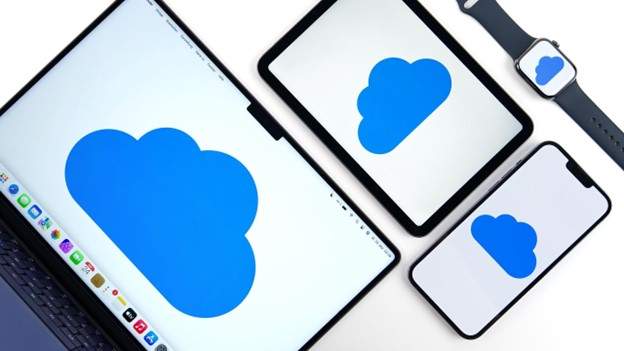
What Is iCloud Data Recovery?
Recovering deleted iCloud files, images, and settings is called iCloud data recovery. It may involve iCloud Drive, Backup, or Sync, depending on the data you lost. Each method works somewhat differently. This is why knowing the tools and boundaries is crucial.
Part 2. Demystifying Core iCloud Services
Let's breakdown each one of iCloud's services:
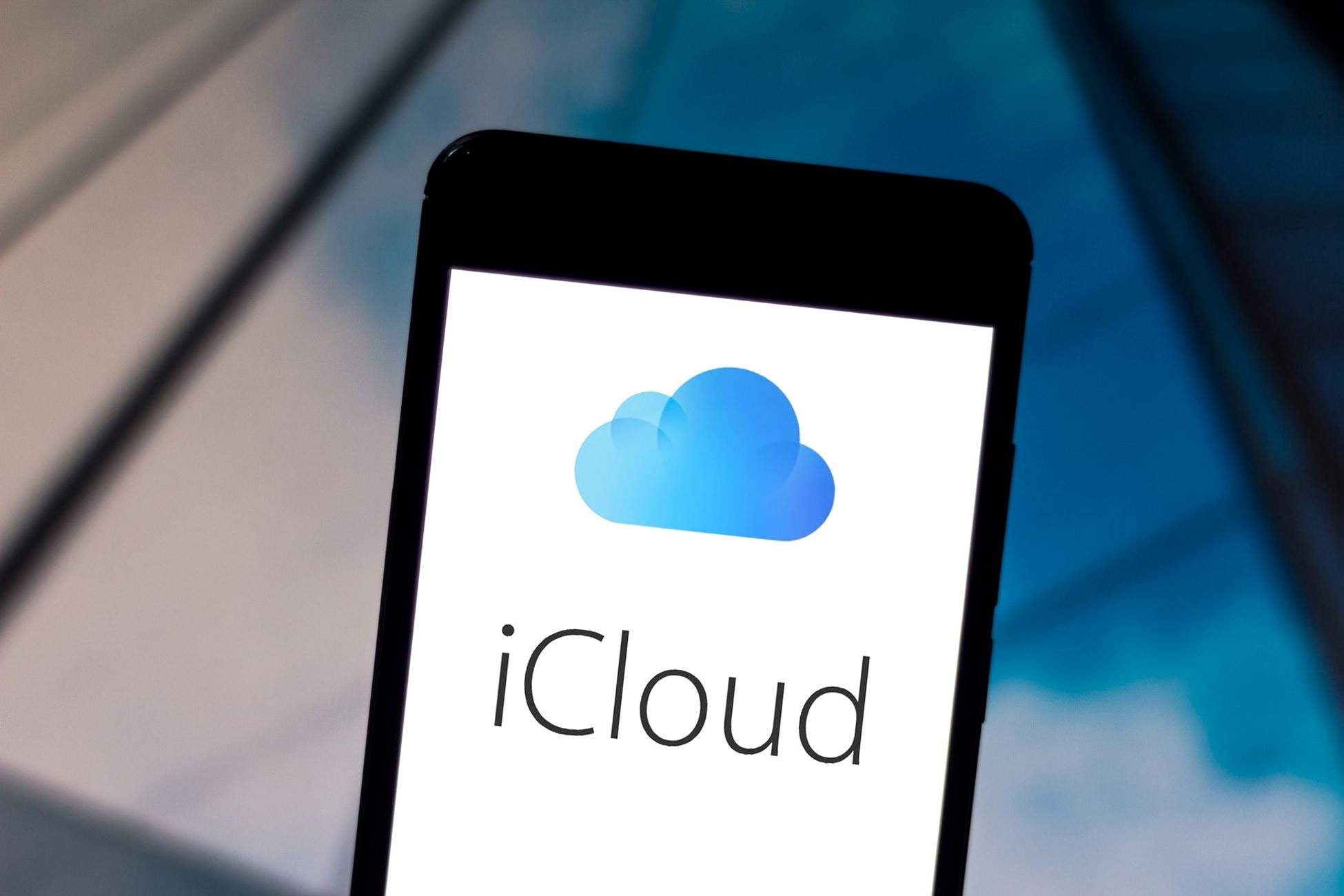
What is iCloud? (The Umbrella)
Apple's main cloud service is iCloud. It covers all iPhone, iPad, and Mac cloud tools like a giant umbrella. However, its main task is to:
- Its primary use is to securely store files and photographs online.
- Sync data across Apple devices.
- Assist in backing up and restoring your device.
What is iCloud Drive? (Your Cloud File Cabinet)
iCloud Drive is the file storage part of iCloud. It works like Dropbox or Google Drive.
You can:
- Save documents, PDFs, pictures, and spreadsheets.
- Access Apple device or iCloud.com files.
- Open or manage files in Files (iPhone/iPad) or Finder (Mac).
- Put files in Pages, Numbers, and Keynote manually or automatically.
What is iCloud Backup? (Your Device Snapshot)
iCloud Backup is not the same as iCloud Drive or Sync.
It takes a full snapshot of your device and stores it in iCloud. This includes:
- Your app data
- Device settings
- Messages
- Photos (if not using iCloud Photos)
- Home screen layout
iCloud Backup happens automatically when:
- Your device is on Wi-Fi
- It's connected to power
- The screen is locked
You can't use iCloud Backup to grab just one file. You restore everything from a backup. So if your phone gets lost or broken, you can set up a new device to look exactly like the old one.
What is iCloud Sync? (The Real-Time Harmony)
iCloud Sync is like a real-time messenger. It updates your data across devices the moment something changes.
For example:
- Add a calendar event on your iPhone? It appears on your iPad, too.
- Save a contact on your Mac? It shows up on your iPhone.
iCloud Sync works for:
- Contacts
- Notes
- Reminders
- Calendar
- Safari bookmarks
- iCloud Keychain (passwords)
- Health Data
- iCloud Photos
- Some third-party apps
Unlike iCloud Backup, iCloud Sync updates happen immediately and in both directions.
Part 3. Use Dr.Fone – Data Recovery to Recover Data from iCloud
In addition to understanding iCloud and iCloud Drive, you need to know the limitations of Apple's built-in recovery tools. iCloud backup, sync, and Drive save your data safely, but you can't examine or recover individual files. Dr.Fone - Data Recovery (iOS) helps. Dr.Fone - Data Recovery can restore iCloud data even when Apple's recovery options are limited.

Dr.Fone - Data Recovery (iOS)
The Best Tool to Recover From Any iOS Devices!
- Designed with the technology of recovering files from iTunes, iCloud or phone directly.
- Capable of recovering data in serious scenarios like device damage, system crash or accidental deletion of files.
- Fully supports all the popular forms of iOS devices.
- Provision of exporting the files recovered from Dr.Fone - Data Recovery (iOS) to your computer easily.
- Users can speedily recover selective data types without having to load the entire chunk of data altogether.
When Should You Use Dr.Fone?
- Recovering photos, contacts, Line messages, Viber chats, and more from iCloud Drive.
- Recovering iCloud backup messages, images, and contacts.
- You shouldn't delete your iPhone to restore a few files.
- Apple's 30-day "Recently Deleted" window may not cover the material.
- You can't locate what you need after trying Apple's recovery.
How to Recover iCloud Data with Dr.Fone
Step 1. Install the latest version of Wondershare Dr.Fone on your PC. Click "Data Recovery" in Toolbox after opening the tool.
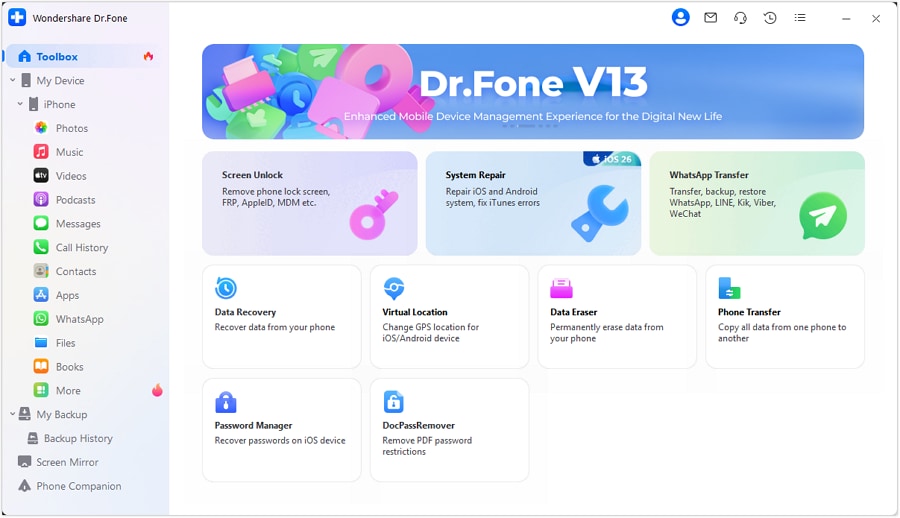
Under "iOS" device type, click "Recover Data from iCloud."

Step 2. Sign in to iCloud using your Apple ID and password. Enter your iPhone's verification code for two-factor authentication. Click "OK" to give Dr.Fone access to your iCloud Drive after verification.
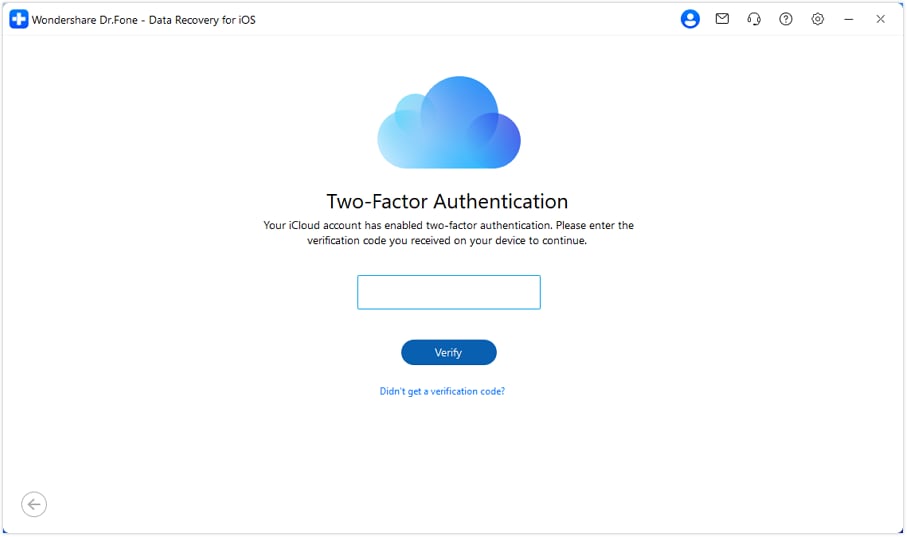
Step 3. Choose the file types you want to recover—messages, contacts, images, call history, app data, etc. Start downloading by clicking "Next" in the bottom-right corner. A live progress bar will display. You may pause or stop it anytime with Stop.
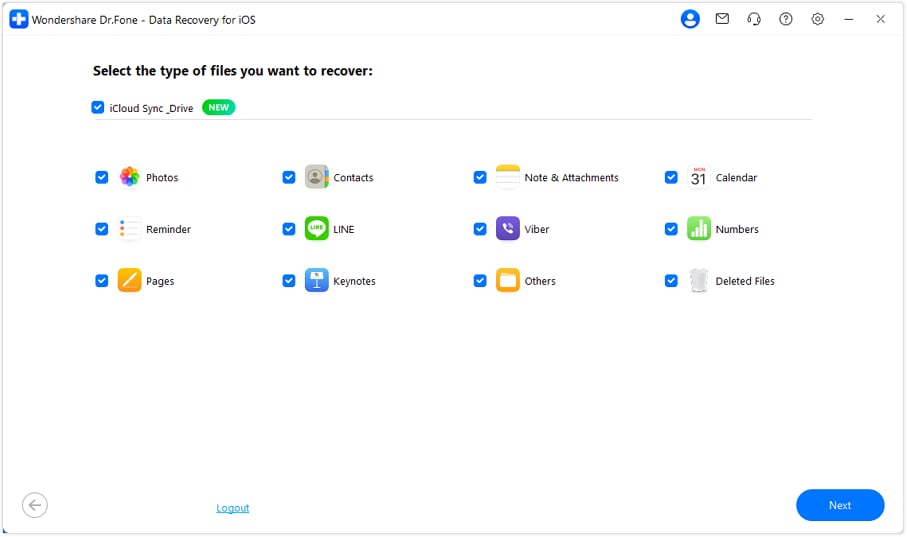
Step 4. Preview the downloaded data in categories. To restore files to your iPhone or iPad, select them and click "Restore to Device." Alternatively, click "Recover" to Computer to save files to your PC or Mac. Select a destination device and see which data may be recovered immediately.
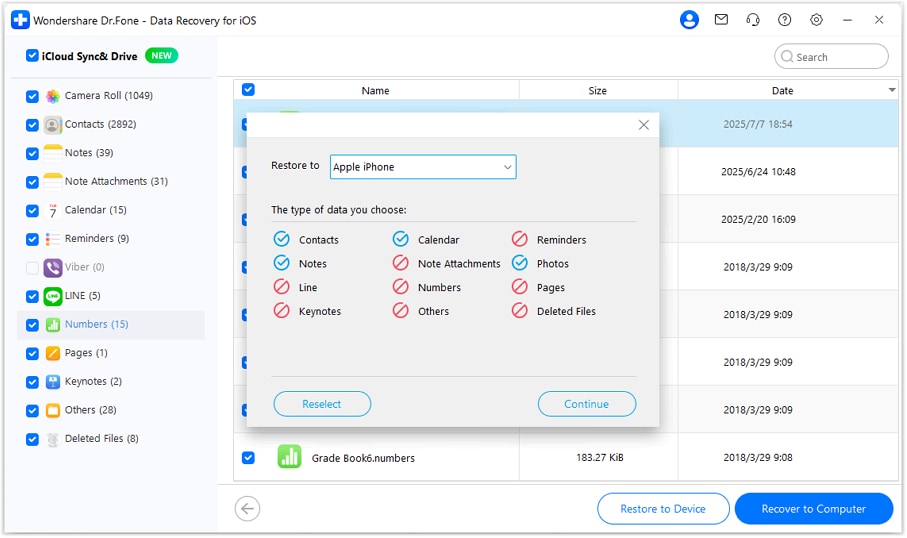
Part 4. iCloud Plus: Enhanced Storage & Features
If you've ever run out of space on your Apple device or wondered how to back up more data, iCloud Plus is the answer.
What is iCloud Plus?
iCloud Plus is Apple's upgraded subscription service. It expands your storage beyond the free 5GB limit and adds a few privacy-focused tools. Many mistake it with normal iCloud, however iCloud Plus has extra storage for files, photographs, and backups. When your default storage is full, you may buy iCloud Plus to add space to your files in iCloud Drive.
Plans and Storage
With iCloud Plus, you can choose from these plans:
| Plan | Storage | Monthly Price (USD) | Features Included |
|---|---|---|---|
| iCloud+ 50GB | 50 GB | $0.99 | - iCloud Private Relay- Hide My Email- Custom Email Domain- HomeKit Secure Video (1 camera) |
| iCloud+ 200GB | 200 GB | $2.99 | - All above features- HomeKit Secure Video (up to 5 cameras)- Share with Family |
| iCloud+ 2TB | 2 TB | $10.99 | - All above features- HomeKit Secure Video (unlimited cameras)- Share with Family |
| iCloud+ 6TB | 6 TB | $32.99 | - Same features as 2TB plan- Ideal for large families or creators |
| iCloud+ 12TB | 12 TB | $64.99 | - Maximum storage tier- Full feature suite- Share with Family |
This extra space is very helpful when you need to store large files, full device backups, and shared photo libraries.
Key Features That Support Recovery
- Expanded Storage: Save more data, resulting in more files in iCloud Drive and iCloud Backup space.
- HomeKit Secure Video: Safely save home camera footage without consuming main storage.
- Private Relay & Hide My Email: Boost your privacy, although they don't directly help with data recovery.
- Custom Email Domains: Useful for personal branding, but not related to iCloud sync or recovery.
Part 5. iCloud Data Recovery: Capabilities & Processes
Losing your files may be stressful. Good news for iCloud users—you can recover your data in many ways. Recovery is feasible for iCloud Drive data, photographs, and entire backups. Explore how.
General Principles of iCloud Data Recovery
iCloud data recovery is easy if your data was saved or synced before losing it.
- Cloud-based: Only iCloud Drive, sync, and backup can be recovered.
- Works Across Devices: Restore data to any Apple ID-signed device.
- Limitations: iCloud isn't a time machine. Unbacked up or synced data cannot be restored.
1. Recovering Files from iCloud Drive
iCloud Drive files are like folders of digital documents. You can recover deleted files within 30 days.
Method 1: Use iCloud.com
Step 1. Log in at https://www.icloud.com/iclouddrive
Step 2. Open "Recently Deleted" in the left pane of Drive.

Step 3. Choose the files to recover.
Step 4. Click "Recover."
Method 2: Use Finders App (iPhone/iPad)
Step 1. Launch macOS Catalina or later Finder. Open iTunes on Windows or macOS Mojave or earlier.
Step 2. USB-connect your iPhone, iPad, or iPod. Tap "Trust This Computer" after entering your passcode.
Step 3. Click your device in Finder, Apple Devices, or iTunes. Click "Restore Backup."
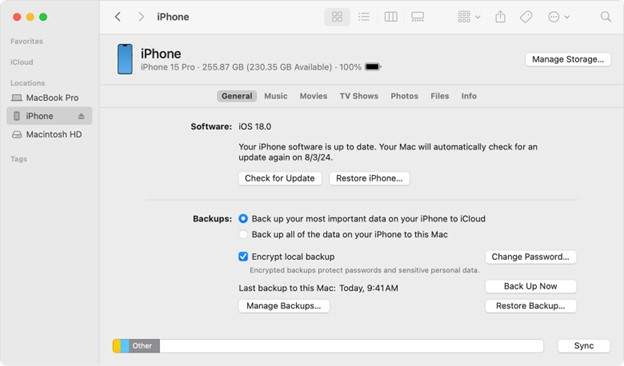
Step 4. Select the most applicable date-and-size backup. Click "Restore" and provide your encrypted backup password (if requested). Stay connected until restoration and sync finish.
2. Data Recovery from iCloud Backup
The entire backup to iCloud includes app data, settings, messages, and more. Reset your smartphone to restore.
When Should You Use iCloud Backup?
Use iCloud backup when:
- You reset or lost your device.
- Restore everything to a new phone.
- You need a full system restore, not one file.
How to Restore from iCloud Backup
Step 1. Power up your iPhone or iPad. Go to "Settings > General > Transfer or Reset > Erase All Content" if it's already set up.
Step 2. Proceed to "Transfer Your Apps & Data" via setup. Select "From iCloud Backup."
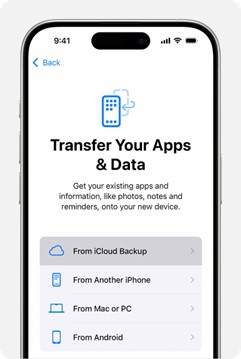
Step 3. Enter Apple ID. Choose a date-based backup. The restoration begins.
Step 4. Check your Wi-Fi. Your data and speed will determine restoration time. Finally, let iCloud restore in the background.
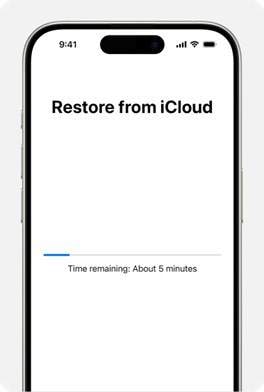
Conclusion
Understanding how iCloud works is critical to protecting your digital life. iCloud Drive stores files, iCloud Backup protects devices, and iCloud Sync syncs data across devices. Each helps you restore data when needed. Even iCloud recovery limits may be solved using Dr.Fone - Data Recovery (iOS). View backups, pick files, and restore without destroying everything.
This guide clarifies iCloud, iCloud Drive, and iCloud Plus, which increases storage for improved recovery. You can now make better data protection decisions. Remember that frequent backups, sufficient iCloud storage, and the correct recovery tool can save what matters most.
iCloud Backup
- Backup to iCloud
- 1. View Text Messages on iCloud
- 2. Backup/Extrac WhatsApp from iCloud
- 3. iCloud Drive, iCloud Sync & iCloud Backup
- Extract iCloud Backup
- 1. Access iCloud Backup Files
- 2. Retrieve Data From iCloud
- 3. Access and Download iCloud Backup
- 4. Top 6 Free iCloud Backup Extractor
- Restore from iCloud
- 1. Restore from iCloud Backup
- 2. Recover Photos from iCloud
- 3. Restore WhatsApp from iCloud
- 4. Restore iCloud Backup to iPhone
- 5. Restore Text Messages from iCloud
- 6. Restore Notes from iCloud
- 7. Restore WhatsApp from iCloud
- 8. Can't Restore an iCloud Backup
- 9. Retrieve Photos from iCloud Backup
- iCloud Backup Issues
- ● Manage/transfer/recover data
- ● Unlock screen/activate/FRP lock
- ● Fix most iOS and Android issues
- Start Backup Start Backup Start Backup

















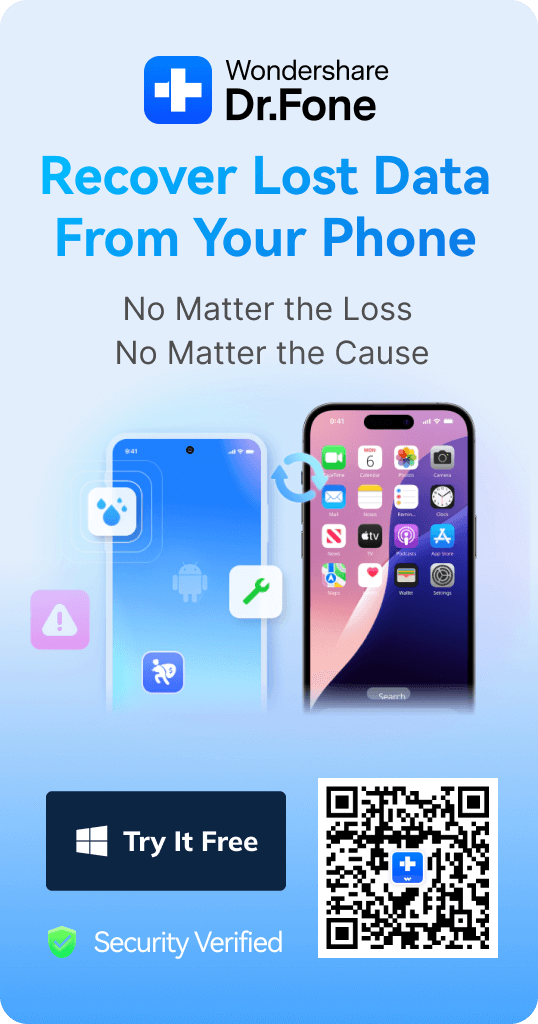

Julia Becker
chief Editor